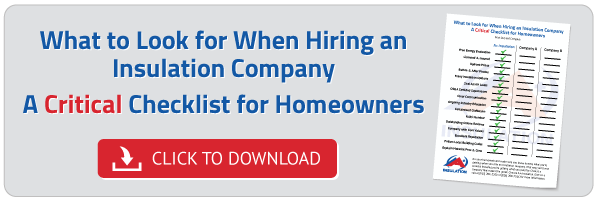
Insulation Never Stops Working
Insulation, whether it’s fiberglass, wool, cellulose, or spray foam, are energy efficient technologies that, once manufactured, require no energy to save energy. Instead of reducing the amount of energy the use, like most “energy efficient” products, they actually save energy from being wasted. Not only does it save energy, it lasts for the life of the building and unless it is damaged, it will never have to be replaced. Now that’s efficient! Some settling can occur over the years with loose-fill insulation and supplemental insulation may need to be added to fill in any gaps, but the original insulation is still working and doesn’t need to be removed or replaced.
Insulation Is a Powerhouse When Compared to Other Energy Saving Products
According to the U.S. Environmental Protection Agency, ENERGY STAR HOMES, insulation saves over 600 times more energy each year than all of the compact fluorescent lights (CFLs), Energy Star Appliances, and Energy Star windows combined. Now that’s impressive!
Installing Insulation Is Simple and Cost Effective
In residential and commercial buildings, energy efficiency through insulation is the simplest and most cost effective way to reduce energy use and greenhouse gas emissions.
Insulation Is Recyclable Too
Most fiberglass and loose-fill insulation like rock and slag wool products are reusable and can easily be removed and put back into place.
Existing Insulation Saves a Lot of Energy
All insulation products installed in U.S. buildings save consumers about 42% of the energy that would have been consumed with no insulation in place.
Insulation Production Consumes Very Little Energy Compared to Its Usage
For every Btu (British Thermal Unit-the measure by which energy is calculated) consumed in the production of insulation, 12 Btus are saved each year by the use of insulation.
Insulation Reduces Carbon Dioxide
Insulation currently in place in U.S. buildings reduces the amount of carbon dioxide by 780 million tons each year – equivalent to the electricity use of over 90 million homes for a year.
